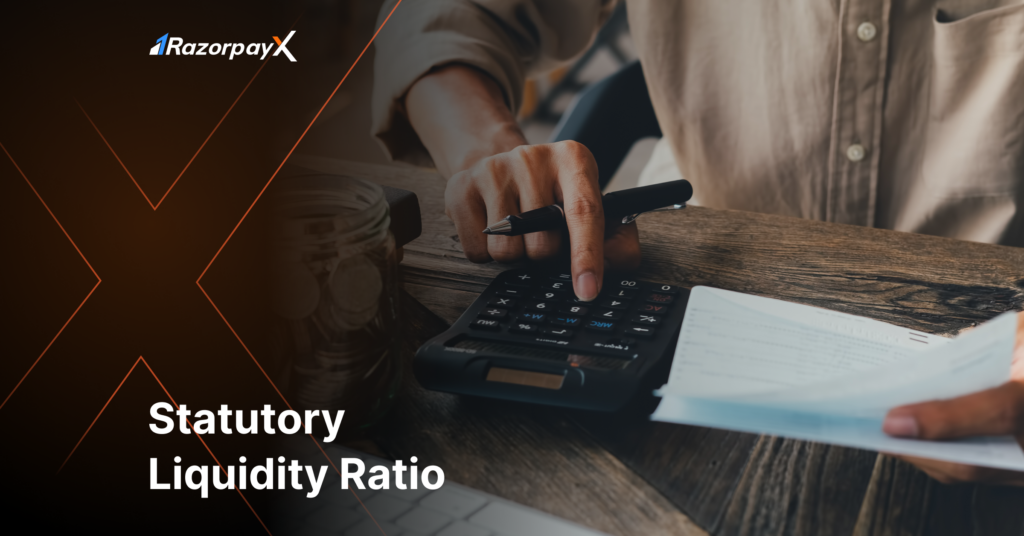The Statutory Liquidity Ratio or SLR is an essential monetary policy tool that is used by the Reserve Bank of India to examine the liquidity that is there with the bank. It refers to a minimum percentage of aggregate deposits that commercial banks must invest in different liquid assets like gold, cash or any approved securities.
Refer to the sections below to gain insight into the statutory liquidity ratio.
Table of Contents
How Does Statutory Liquidity Ratio Work?
Statutory liquidity ratio can be referred to as the reserve requirements that banks must have before extending credits to customers. It is among the monetary components that RBI has at its disposal. Besides checking inflation and liquidity, this monetary tool ensures the bank’s solvency.
The Reserve Bank of India can increase the statutory liquidity ratio up to 40%. Increasing the SLR constricts banks’ ability to lend more and inject cash flow into the Indian economy. SLR determines how many liquid assets banks must have at their disposal to cater to the requirement of depositors.
The government uses this tool to regulate inflation. While increasing the statutory liquidity ratio helps in controlling inflation, reducing it will result in the growth of the economy.
What Are the Components of SLR?
-
Liquid Assets
Liquid assets are assets that can be easily encashed. For instance, gold, cash reserves, government bonds, treasury bills etc. Even liquid assets encompass securities that qualify under Market borrowing programs and Market stabilisation schemes.
-
Net Demand Liabilities
As the name suggests, net demand deposits are all such liabilities that banks have to pay on demand. Net demand liabilities include current deposits, demand drafts, saving bank accounts, etc.
-
Time Liabilities
In time liabilities, depositors will not be able to withdraw their deposits instantly as the deposits can be repaid upon maturity. It is like the fixed deposit bank accounts where depositors have to wait till the lock-in period is over and access the funds. Examples of time liabilities include staff security deposits, investment deposits etc.
Net Demand and Time Liabilities (NDTL) is the overall sum obtained by combining time liabilities, demand liabilities and other liabilities, and subtracting the deposits that are held in other banks.
Objectives of Statutory Liquidity Ratio
The primary objective of the Statutory Liquidity Ratio is to maintain liquidity. However, there are other objectives of this monetary tool.
- The statutory liquidity ratio helps in controlling inflation and credit flow.
- It leads to an increased investment rate in government securities.
- SLR helps RBI to offer safety assurance to commercial banks.
- When the Reserve Bank of India raises CRR, SLR helps in preventing commercial banks from liquidating assets.
- It also aids the government in selling numerous securities.
Influence of SLR on Investors
The statutory liquidity ratio is one of the key components that determine the base rate in the Indian economy. Hence, RBI and Indian Government work together to ensure that the statutory liquidity ratio is balanced.
RBI considers the statutory liquidity ratio as a reference rate to determine the base rate. It is the rate below which banks cannot lend money to customers. Such rates are fixed to ensure transparency related to borrowing and lending, thereby bringing discipline and coherence to credit market operations.
The base rate also influences the affordability of loans. It aids financial institutions to bring down the cost of lending. Hence, business bodies opting for funds must have a clear idea of SLR.
Banking has faced prominent evolution. The evolution of the fintech space has had a significant impact on businesses today.
- RazorpayX allows business owners to open current accounts, pay taxes, schedule payments, pay vendors seamlessly and check invoices from a single dashboard. This saves valuable time and effort.
- It fills the gap between advanced banking solutions and finance professionals. It allows easy accounting software integration.
- With RazorpayX Payroll, businesses can automate salary payments and provide insurance policies to their employees.
Frequently Asked Questions
What is the difference between SLR and CRR?
Cash Reserve Ratio (CRR) refers to the percentage of deposits that banks must keep with the Reserve Bank of India. On the other hand, Statutory Liquidity Ratio (SLR) is the minimum percentage of deposit that banks have to keep in their vault in the form of liquid assets. In the case of SLR, liquid assets are maintained by financial institutions, on the other hand, in CRR cash reserves are controlled by RBI.
What happens if Statutory Liquidity Ratio is not maintained?
In case a commercial bank does not maintain statutory liquidity, a penalty of 3% will be levied on the bank rate annually by RBI. The amount will increase to 5% if the same is defaulted on the next working day too.
What is the formula used to calculate the statutory liquidity ratio?
The formula that enables one to compute SLR is -
SLR = Liquid Asset / (Net Demand + Time Liability) X 100
Does a bank earn a return from the statutory liquidity ratio?
Banks earn interest on the liquid assets that are parked along with approved securities. With a Cash reserve ratio, banks earn zero returns on the cash parked with RBI.


